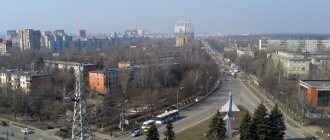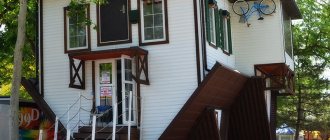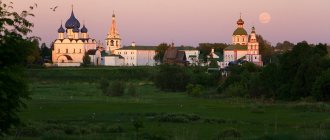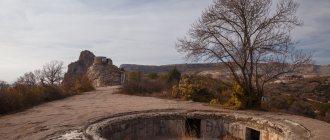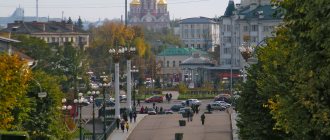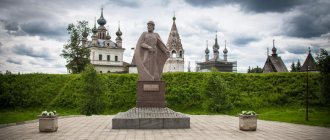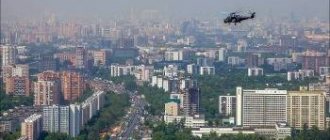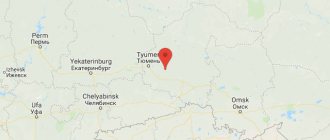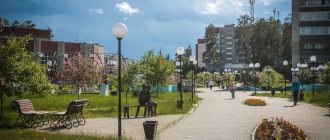A little history
Back in 1933, construction of the Aerohydrodynamic Institute began in the city. Upon completion of the work, the institute rapidly expanded; specialists came here, for whom they began to build housing. Thus, by 1940 the village of Stakhanovo appeared. But after a few years, the village turned into a small town, and it was renamed Zhukovsky in honor of the Soviet founder of aerodynamics, N.E. Zhukovsky. The monument to the scientist was opened in 1969 and is located on Mayakovsky Street, 26.
Today the city is a real scientific center of Russian aviation.
Tutor of the royal family
Vasily Andreevich Zhukovsky entered the service of the royal family in 1815. For two years, the writer worked as a reader for his mother, Empress Maria Feodorovna. The writer will spend the next 25 years in court service. Photos from that time have practically not survived.
In 1817, Zhukovsky began teaching. The teacher teaches Russian language and literature to the wife of Nicholas the First, Alexandra Fedorovna, and later Mikhail Pavlovich’s wife Elena Pavlovna attends Vasily Andreevich’s lessons. Zhukovsky gradually expanded the horizons of his students, including philosophy, history, pedagogy and aesthetics in the curriculum.
Emperor Nicholas I and Alexandra Feodorovna
Experience and knowledge allowed Zhukovsky to move up the career ladder. Vasily Andreevich was appointed mentor to the crown princes. From that time on, the author of fairy tales, poems and ballads became the leader of educators and teachers working in the royal family. Zhukovsky admitted that in his new position he could “do good.”
The career of a mentor to the Tsarevich implied responsibility to the little boy and the big state, so the teacher reads and rereads fiction, pedagogical, and philosophical literature. The first classes with the Tsarevich took place in the fall of 1826. By this time, Zhukovsky had prepared a library for the heir to the throne and developed a training plan, a daily schedule, which the tsar approved.
Vasily Zhukovsky - mentor of Tsarevich Alexander II
Vasily Andreevich was responsible for Russian grammar, physics, human history, history and geography. The lessons taught by other teachers did not go unnoticed by Zhukovsky. The writer gave teachers recommendations on how best to teach a particular subject. Vasily Andreevich wanted to see an educated tsar on the Russian throne, so he invited scientists to his court. Zhukovsky had his own vision of the future ruler. The Tsarevich should strive for education, but one must not forget about sincerity.
“Where the ruler loves the people’s welfare, there the people love the power of the ruler,” asserted Vasily Andreevich.
For 12 years, the mentor trained the heir to the throne; only when the Tsarevich became an adult did work at court officially end for Zhukovsky. As a farewell, Prince Alexander received a gift from his teacher - an “educational journey.” The future ruler, together with Zhukovsky, went on a trip to the cities of Russia and the countries of Western Europe.
Vasily Zhukovsky
Vasily Andreevich independently drew up a route, during the trip along which the Tsarevich became acquainted with his state. Meanwhile, in 1841, relations between the royal court and Zhukovsky became tense to the limit. The writer received his resignation and left for Germany.
Entertainment and attractions
Zhukovsky is a green city where you can breathe easily and really want to do science. In the center of the village there is a park of culture and recreation, behind which is the Tsagovsky forest - a green area with deciduous and coniferous trees.
Not far from Zhukovsky there is Lake Kratovskoe and the Moscow River. There are several sanatoriums in the city itself.
The city has Vorontsovsky Park, which contains the remains of the majestic estate of the same name. And in the neighboring village of Bykovo, the old Vladimir Church has been preserved, which is famous for its Gothic style, which is not typical of Russian architecture.
The city has a standard set of entertainment options - clubs, cinemas, bowling alleys and others. And if you have time, you can go to a performance at the Strela Theater (Kirova Street, 3). The repertoire includes performances for both children and adults. And the theater itself is located in an old mansion, where Tchaikovsky himself and von Mecca (philanthropist) visited.
Museums
It is impossible to imagine the city of aviation without a thematic exhibition, and first of all, this is the Zhukovsky Museum of Aviation and Conquest of the Sky. The collection of exhibits and facts began back in 1969, but the doors opened to visitors only 10 years later. Here you can find out how the national aviation industry and the city itself have developed since the 17th century. The most valuable photographs and documents are presented in the form of an interactive show.
The second room is no less interesting; examples of pilot uniforms are collected here. You can also learn Morse code and learn how a parachute works. The third hall features changing exhibitions. The museum is located on Chkalova Street, 41.
On Zhukovsky Street, 1 there is another museum - TsAGI. It has been operating since 1964, and the most interesting thing about it is a large collection of aircraft models from different periods. Here you can also see a working model of some installations, for example, the T-101 wind tunnel.
Arzamasets Svetlana
Among the Arzamas residents there were political figures - Uvarov, Bludov, the future Decembrists Orlov and Turgenev, and famous poets - Batyushkov, Vyazemsky, Pushkin’s uncle and nephew. Vasily Zhukovsky became secretary of the society. And since all members of society were given comic nicknames taken from Zhukovsky’s ballads, the author himself was given the honor of being called Svetlana.
“One morning, several people received a circular invitation from Uvarov to come see him on the evening of October 14th. The owner took the place of the chairman and in a short speech, well written in Russian, implementing Bludov’s idea, he proposed that the meeting form a small society of “Arzamas unknown writers.” Zhukovsky's inventive humorous genius instantly awakened: with one glance he saw a long series of cheerful evenings, an endless thread of smart and decent pranks. Everyone died laughing at the laws he proposed to the new society; he was unanimously elected its secretary.”
Memoirist Philip Wiegel
Zhukovsky himself often went to Dorpat (now Tartu) and could not always attend society meetings, but he also sent his works from there: for example, his parody poem “Oatmeal Kisel” was unanimously recognized by the people of Arzamas as “heavenly cream.”
Karl Bryullov, portrait of Vasily Zhukovsky, 1837, Tretyakov Gallery
Vasily Zhukovsky and “Bulletin of Europe”, 1850s
Orest Kiprensky, portrait of Vasily Zhukovsky, 1815, Tretyakov Gallery
Monuments
At the corner of Mendeleev and Gagarin streets there is a MiG-21 stele. This is the most famous aircraft fighter. During the period of its design and construction, it was in Zhukovsky that its tests were carried out.
The city has an interesting tradition among students. At the end of the session, a spinning propeller is installed on the plane in honor of such a significant date for students. The propeller remains on the stele for several days. Also, anyone has the opportunity to climb onto the plane, climb inside and examine the structure.
Toy railway
In the suburbs of Zhukovsky there is an interesting place - the Small Moscow Railway. The line consists of only two stations: “Yunost”, “Detskaya”, but there are two more on request. Interestingly, the road itself runs along the border between the village of Krotovo and the city.
On the basis of the railway there is a training club for schoolchildren from 11 to 17 years old. People from 25 schools in the capital come here to study. Students of the University of Transport and Communications (Moscow) also do their internship here.
Children's railway operating hours: from 10:00 am, from Thursday to Sunday, from the end of May to August (last Sunday).
Interesting fact: in 1938, scenes from the film “Girl with Character” were filmed on the road.
Ramenskoye airfield
This is another attraction of Zhukovsky. This is a universal airfield capable of receiving almost all types of aircraft. 7 Russian airlines are based here.
Newly designed aircraft are being tested at the airfield. Ramenskoye also accepts international cargo.
During World War II there was a base for bombers and assault vehicles. And during the construction of the Buran spacecraft, it was from here that parts of the space shuttle were sent to Baikonur.
Today an air show is being held at the Ramenskoye airfield. Once every two years, spectators come to the city to see how new models of flying ships are demonstrated and flying aces demonstrate their skills.
Holy places
There is an interesting attraction in Zhukovsky - the Church of the Transfiguration of the Lord. This is a new building, erected in 2003. It is designed for 1 thousand parishioners.
The church is a six-pillar structure with five domes. The main shrine of the temple is an icon depicting local new martyrs. The church is located on Gagarin Street, 77a.
Connoisseurs of church architecture should go to the village of Udelnaya (Internatsionalnaya Street, 12) to look at the wooden Church of the Life-Giving Trinity. The temple was built back in 1897, but the most important thing is that the church is wooden, and it was built in just 4 months.
The shape of the church is built in the shape of a cross, has beautiful domes and gilded crosses. Another feature of the church is its iconostasis, made in the best Byzantine traditions and made of oak. On the walls of the temple there are beautiful icons painted on a golden background. And the most unique one is the icon of St. Nicholas the Wonderworker, painted on stone.
Death
Vasily Andreevich Zhukovsky lived in Baden-Baden for a long time. In 1851, illness came to him. One of the writer’s eyes could no longer see, so the creator was recommended to spend more time in a dark room. Despite health problems, Vasily Andreevich passionately wanted to return to his homeland - to Russia. Chaadaev and Gogol supported the writer in this.
Grave of Vasily Zhukovsky
On July 14, 1851, the Zhukovsky family was supposed to hit the road, but this did not happen because the man’s eye became inflamed. Vasily Andreevich could not write or read on his own. The writer was assisted by his wife and valet. Zhukovsky’s health was rapidly deteriorating, so the author of poems and ballads asks Vyazemsky to come to Baden.
Vasily Andreevich finally fell ill after Gogol’s death. And on April 12, 1852, the writer himself died. The author of the fairy tales “About Tsar Berendey” and “The Sleeping Princess” was buried in a special crypt, on the walls of which lines of his poems were carved. Knowing the writer’s love for Russia, in August 1852 the valet transported Zhukovsky’s ashes to St. Petersburg. Now the grave of the poet, translator and teacher is located at the Tikhvin cemetery of the Alexander Nevsky Lavra, not far from the grave of N. Karamzin.
Estate in Bykovo
Another attraction of Zhukovsky, which is why people come here. The estate was erected back in the 17th century, and the initiator of the construction was the favorite of Catherine the Second, Izmailov, to whom the queen granted Bykovo for his participation in the conspiracy. Later, the estate became the property of the Vorontsov-Dashkov family, and the most recent owners were the Ilyins.
This is a two-story building with external decoration in light stone. There are also several ponds and a bell tower, which was built in the 19th century. Previously, there was a Hermitage on the territory of the estate, but today it is completely lost. The park itself is represented by many winding paths and secluded places to relax.
Here, in the village of Bykovo, you can look into the Church of the Vladimir Icon of the Mother of God. It was built in the 18th century. This is a striking example of the pseudo-Gothic style. Under Soviet rule, the church was completely looted and closed, even church books were burned. Then a garment factory and warehouses were located in the temple. Only in the 80s of the last century the temple was returned to believers.
The city of Zhukovsky is a beautiful and neat city, where you can come with a tour or on your own, walk through the parks and see the sights, and learn a lot of interesting things about aviation.
“How We Lived” - memories of Zhukovsky in the 40s and 50s
In the photo: by the pool on the territory of the MGB sanatorium. 1951 Behind the fence are Gorelniki..
Seven grades up to the letter "F"
Yuri Sirotin came to our city (at that time the village of Stakhanovo) in April 1945, he was then six years old. Came with his mother. Father, hero of the Great Patriotic War, holder of the Order of Suvorov and many other awards, died in 1944 during the liberation of Latvia. Before the war, he also took part in hostilities in the Far East, near Lake Khasan and Khalkin Gol.
– I was born in the Far East, at Razdolnaya station, just when the fighting was going on at Lake Khasan - in August 1938. My father was participating in battles at that moment - he commanded reconnaissance in the 32nd Infantry Division.
Arriving in the village of Stakhanovo, Yuri and his mother settled in one of the houses on the territory of the MGB sanatorium (Ministry of State Security, now the FSB sanatorium - author's note), in which his mother's brother worked as an accountant.
In the photo: building No. 1 of the MGB sanatorium. 1949
– In August 1945 I turned 7 years old and went to school. It was located in a small two-story barracks on Osipenko Street. On the first floor there was a dormitory for TsAGI employees, and we studied on the second. There were as many as seven first classes – up to the letter “F”. At the same time, in our class there were children born in 1938, like me, until 1934, that is, children from 7 to 11 years old. This, by the way, was even a plus - we communicated in the same company and the older guys always protected us.
In the photo : 3rd grade, school No. 1. 1947
To the beat of Japanese drums
– Did you live right on the territory of the MGB sanatorium?
– Yes, my mother worked there as a nurse. At that time, the sanatorium was located in only one building, the second was a hospital, and the third building housed Japanese prisoners of war.
– Were there any Japanese here?
– Yes, we looked into their barracks, they gave us multi-colored lids from tin boxes for sweets or lollipops. There were about fifty of them, they went to work at the LII, where the clinic was being built. They said that they had equipped some kind of premises there, like an X-ray room, the Japanese are literate. They had windings on their legs, and they walked to the beat of a drum. By the summer of 1946 they were no longer there.
– Have you seen German prisoners of war?
- Certainly. They worked at several sites, one of them was not far from the sanatorium - the Germans were building a laundry on Papanina Street, now Stroitelnaya. We brought them bread, and in return they made toys for us, made from sticks and ropes - you twist such a structure on both sides, as if an acrobat is spinning on a horizontal bar - we called the toy “physical educationist”.
In the photo : Ski trip to Borovsky Kurgan. 1951 Behind the Moscow River
From “spotty spots” to small towns
– In the photos you brought, there is also a lot of physical education.
- Yes! For example, we had a large skating rink on the territory of the sanatorium, where children from all over the area came to skate. Some had “spotty skates”, others “snow maidens”. We skied a lot, usually to the Borovsky Kurgan, crossing the ice across the Moscow River. And on the territory of the sanatorium there was an excellent playground for playing small towns; people came to play there from all over the city, from TsAGI, from LII. In urban sports we had very strong players and teams. There was also a very good tennis court on the territory of the sanatorium, and a lot of high officials came here to relax: diplomats, attaches of all sorts...
In the photo : “sanatorium” boys on the territory of the sanatorium. 1952
– I know that many professional teams also came to the sanatorium to relax?
- Yes, first of all, Dynamo (the Dynamo society belonged to the MGB system - editor's note). Hockey and football teams of Moscow Dynamo, football players of Kyiv and Tbilisi Dynamo. Some even worked with us boys. For example, Zhenya Romishevsky is the older brother of the famous Soviet hockey player Igor Romishevsky. Zhenya and I are still friends. So, he climbed over the fence to our skating rink, we skated together. The coaches of Dynamo Moscow saw him here and invited him to practice with the hockey team. Zhenya trained for a year in the youth team, then played bandy at Urozha. Then he finally chose science, became a scientist (he still works at MIPT), and his younger brother was a player for the USSR national team.
In the photo : at the sanatorium skating rink, local children and the coach of the Dynamo (Moscow) hockey team (in the center)
By the way, visiting hockey and football teams usually played at the old stadium, which was then located behind the current first gymnasium. There was a barracks nearby that had a cinema. At one of the sessions, I once saw Vasily Chuikov, sitting in the front row, the famous commander of the 62nd Army, which heroically defended Stalingrad.
Egg for the trumpeter
In the second grade, in 1946, Yuri Sirotin and his classmates moved to study in the building of the current gymnasium No. 1, which until then had temporarily housed a military hospital.
– Later, when we finished four classes, we just built the current school No. 3. We moved there in 1949, this was the first recruitment. There were very good and demanding teachers there. For example, Grigory Petrovich taught history, we knew all the dates and chronology by heart, and the teacher of literature and Russian language was Liya Isaakovna Feldman - we learned a lot of poetry with her.
In the photo: Yuri Sirotin on the territory of the sanatorium. 1949 Behind the fence is Nizhegorodskaya street
Since 1947, every summer Yuri went to pioneer camps. At first, the camp was located right on the territory of the sanatorium, then in other places in the neighboring Ramensky district - in Zagornovo, Dergaevo, Myachkovo.
- When I was ten years old, I was a bugler in a pioneer camp, “Get up, get up, my friend, from bed to potty!” (laughs) - these humorous words were sung to the music of the rise. “Sleep, sleep, in the wards, pioneers, Octoberists” - this is already to the sound of the all-clear. For breakfast, as a bugler, I was given an extra egg, one for everyone, and two for me.
In the photo: in the pioneer camp (on the territory of the sanatorium). August 1947
Many of the photographs that Yuri Sirotin kept were taken by Pyotr Ivanovich Mityaev. According to Sirotin, at that time he was the best photographer in the city, famous, however, also outside its borders.
– He also worked at the sanatorium. Vacationers often went on excursions to Moscow: to the Tretyakov Gallery, to the Bolshoi Theater. And Pyotr Ivanovich traveled with them and took various photos as souvenirs. In addition, he photographed many famous people. For example, one day Komsomolskaya Pravda published a photograph of Yuri Gagarin, and someone else next to him. Under the photo there was a question: who is standing next to the first cosmonaut? And it was Pyotr Ivanovich! He often did this: after photographing a famous person, he asked someone nearby to photograph him.
In the photo : Pyotr Mityaev photographs a sporting event on the territory of the sanatorium (next to Yura Sirotin). 1949
– You said that you took some of these photos yourself?
- Yes! The fact is that Pyotr Ivanovich was a relative of mine, so he often gave me his second camera, and I also took photographs. Many of these photographs have survived, and they contain memories of that time.
In the photo: “sanatorium” guys. 1949
In 1952, Yuri Sirotin graduated from school No. 3, she was then a seven-year-old. In 1954, he came to work at the Flight Test and Development Base of the Tupolev Design Bureau as an apprentice - this is how the working biography of a man began, through whose hands dozens and hundreds of aircraft subsequently passed. He collected them from bolts to wires. But this is a separate story, which we will tell another time.
In the photo: school No. 3, 6 (7?) grade. 1951 (52?), year
photographs from the archive of Yuri Sirotin
Pavel Zubrilin
Source:
https://inzhukovskiy.ru/intervyu/kak-my-zhili-vospominaniya-o-zhukovskom-40-50-h-godov
